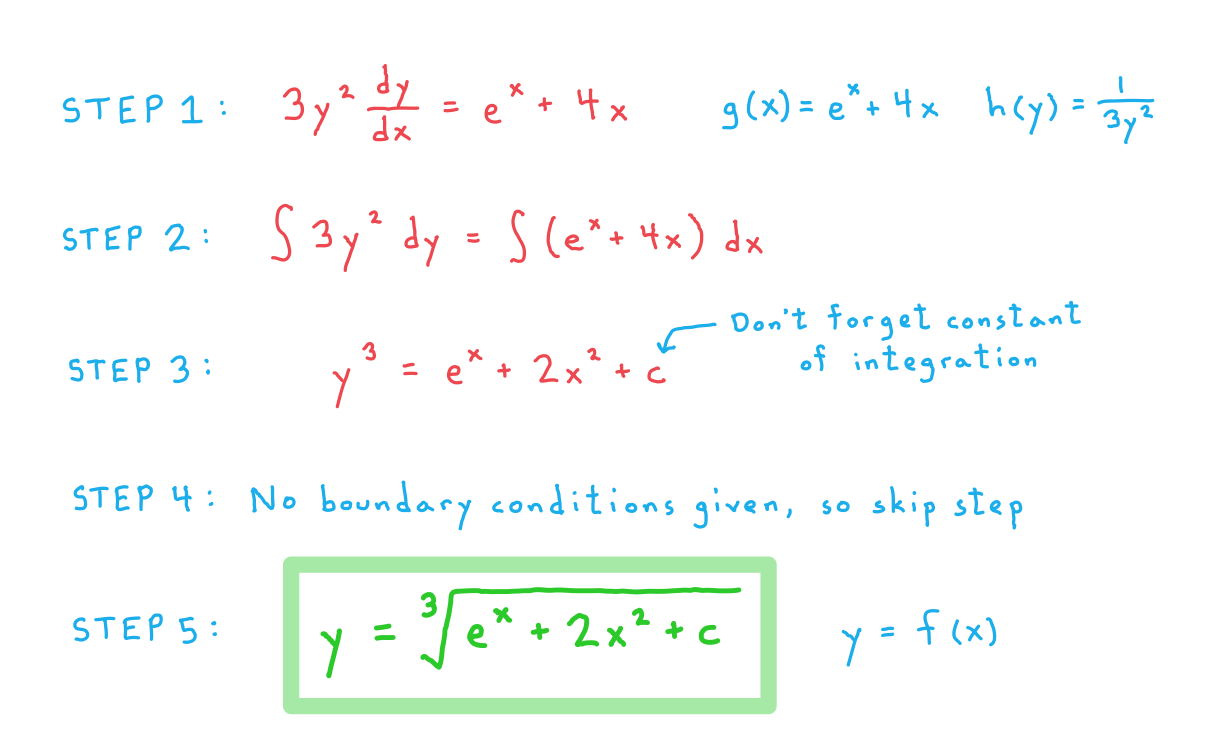Separation of Variables
What is separation of variables?
- Separation of variables can be used to solve certain types of first order differential equations
- Look out for equations of the form
- i.e.
is a function of
multiplied by a function of
- be careful – the ‘function of
’
may just be a constant!
- For example in
,
and
- If the equation is in that form you can use separation of variables to try to solve it
- If the equation is not in that form you will need to use another solution method
How do I solve a differential equation using separation of variables?
- STEP 1: Rearrange the equation into the form
- STEP 2: Take the integral of both sides to change the equation into the form
-
- You can think of this step as ‘multiplying the
across and integrating both sides’
- Mathematically that’s not quite what is actually happening, but it will get you the right answer here!
- You can think of this step as ‘multiplying the
- STEP 3: Work out the integrals on both sides of the equation to find the general solution to the differential equation
- Don’t forget to include a constant of integration
- Although there are two integrals, you only need to include one constant of integration
- Don’t forget to include a constant of integration
- STEP 4: Use any boundary or initial conditions in the question to work out the value of the integration constant
- STEP 5: If necessary, rearrange the solution into the form required by the question
Exam Tip
- Be careful with letters – the equation on an exam may not use
and
as the variables
- Unless the question asks for it, you don’t have to change your solution into
form – sometimes it might be more convenient to leave your solution in another form
Worked Example
For each of the following differential equations, either (i) solve the equation by using separation of variables giving your answer in the form , or (ii) state why the equation may not be solved using separation of variables.
a) .

b) .

c) , given that
when
.

